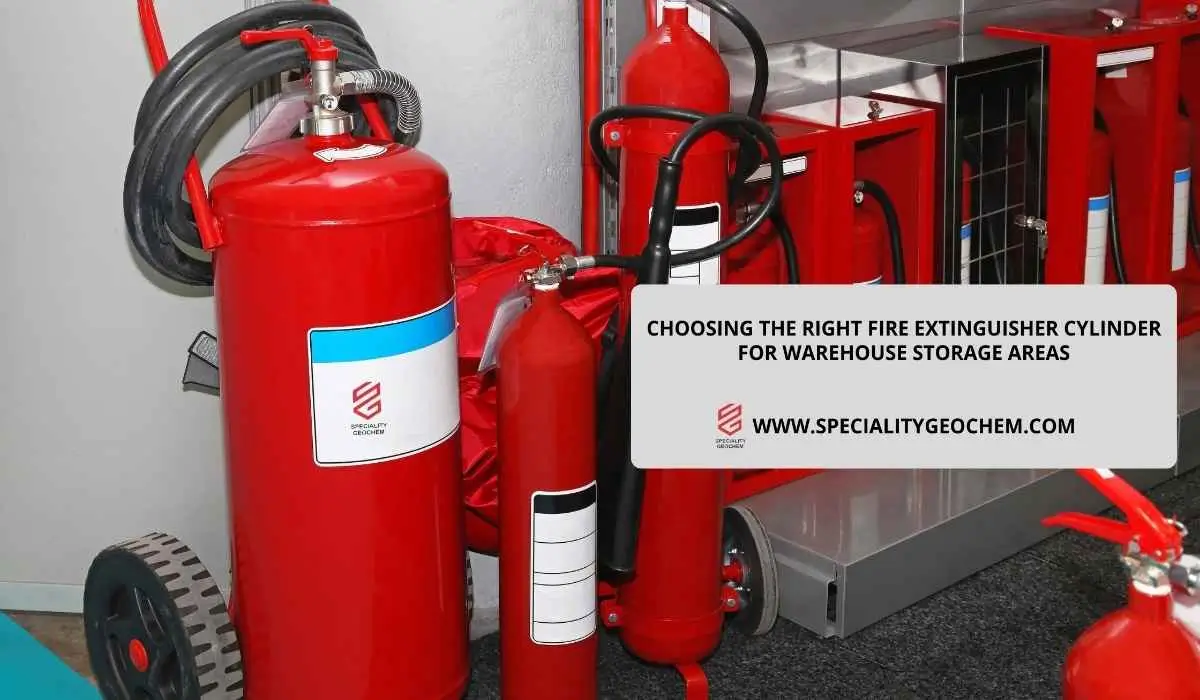Warehouses are the heart of supply chains, storing raw materials, finished products, and valuable equipment in one place. With their large floor space, stacked goods, and high-bay racking systems, they also present a unique set of fire risks. From electrical wiring and forklifts to flammable packaging, a small ignition can spread quickly if fire safety systems are inadequate. This makes the installation of the right Fire Extinguisher Cylinder for Warehouse storage areas not just a legal requirement but also a vital step in protecting lives, assets, and business continuity.
In this article, we’ll explore the importance of fire extinguisher cylinders, the factors to consider when choosing them, the different types available, and how to ensure they are maintained for long-term effectiveness.
Why Fire Safety in Warehouses Cannot Be Overlooked
A warehouse fire is not only dangerous but also costly. Reports show that even a short fire incident can destroy goods worth millions, disrupt supply chains, and take weeks to recover from. Unlike small offices or shops, warehouses have:
- Larger storage capacities with bulk quantities of goods.
- High racks and vertical stacking, making fire suppression harder.
- Flammable materials such as wooden pallets, cardboard, and plastic wraps.
- Heavy machinery and electrical equipment that increase the risk of sparks.
Because of these challenges, a warehouse cannot rely on ordinary safety measures. Installing the correct Fire Extinguisher Cylinder for Warehouse use ensures that fire can be controlled in its earliest stages, giving employees time to evacuate and preventing small sparks from turning into massive disasters.
Factors to Consider When Selecting Fire Extinguishers for Warehouses
Choosing the right extinguisher requires careful planning. Each warehouse is different depending on the industry, goods stored, and layout. Here are some key considerations:
1. Type of Fire Risks
Warehouses may face Class A fires (wood, paper, cloth), Class B fires (flammable liquids, oils), Class C fires (electrical equipment), or even Class D fires (metals). The extinguisher must be matched to the type of risk. For example, a warehouse storing chemicals will require different protection compared to one storing textiles.
2. Size of the Facility
The bigger the warehouse, the more extinguishers are needed. Guidelines often suggest an extinguisher every 15–20 meters so workers have quick access in case of emergency.
3. Accessibility and Placement
Extinguishers should be wall-mounted at visible points, away from obstructions, and close to high-risk zones such as electrical panels, machinery, and loading docks.
4. Compliance with Regulations
Every region has fire safety codes that mandate the number, type, and placement of extinguishers. For example, Indian standards (BIS/ISI) and international standards (NFPA, UL) provide detailed guidelines for warehouses.
Types of Fire Extinguisher Cylinders Suitable for Warehouses
Different fire risks demand different extinguishing agents. Below are the most common cylinders recommended for storage areas:
1. Water and Foam Extinguishers
- Effective on Class A fires involving wood, paper, and fabrics.
- Commonly used in warehouses storing packaging materials or textiles.
- Not suitable for electrical or flammable liquid fires.
2. Carbon Dioxide (CO₂) Extinguishers
- Ideal for electrical fires in control rooms, machinery, and forklifts.
- Leaves no residue, making it safe for electronic equipment.
- Limited range, so must be placed strategically.
3. Dry Chemical Powder (ABC) Extinguishers
- Multipurpose and widely recommended for warehouses.
- Effective against Class A, B, and C fires.
- Affordable and easy to maintain.
4. Clean Agent Extinguishers
- Use eco-friendly gases that leave no residue.
- Perfect for warehouses handling sensitive equipment or perishable goods.
- Higher cost compared to traditional cylinders.
5. Specialized Extinguishers
For warehouses dealing with flammable metals, Class D extinguishers are necessary. Similarly, warehouses storing oils or chemicals may require foam-based cylinders.
By selecting the right mix of extinguishers, a business ensures that any type of fire outbreak can be effectively controlled.
Installation Guidelines for Maximum Protection
Buying the right extinguisher is only the first step. Correct installation and usage training are equally important.
- Mount at Accessible Heights – The handle should be about 1 meter from the floor.
- Position Near Hazards – Place extinguishers close to entry points, exits, electrical rooms, and storage racks.
- Follow Escape Routes – Fire extinguishers should be visible along evacuation paths.
- Use Signage – Mark extinguisher points with clear signage for quick identification.
- Train Staff – Every warehouse worker must know how to operate extinguishers using the PASS method (Pull, Aim, Squeeze, Sweep).
Regular Maintenance and Inspection
An extinguisher that doesn’t work in an emergency is worse than having none. That’s why regular inspection is vital:
- Monthly Checks – Ensure cylinders are fully charged, seals intact, and no physical damage is present.
- Annual Servicing – Professional technicians should check pressure levels, refilling needs, and expiry dates.
- Replacement After Use – Even partial usage requires refilling or replacement.
- Training Refreshers – Conduct periodic fire drills to keep staff prepared.
Warehouses with well-maintained extinguishers have a higher chance of controlling a fire before it spreads.
Role of Advanced Fire Safety Systems
While extinguishers are essential, warehouses may also need advanced solutions such as:
- Automatic Fire Suppression Systems for high-bay racks.
- Fire Extinguisher Balls that activate upon contact with flames.
- Smoke Detectors and Sprinklers for early warning and suppression.
Combining these systems with the right Fire Extinguisher Cylinder for Warehouse use provides a multi-layered safety shield.
Conclusion
Fire safety is not an optional investment but a responsibility every warehouse owner must take seriously. The right Fire Extinguisher Cylinder for Warehouse storage areas protects workers, goods, and the business itself from devastating fire losses. By carefully assessing fire risks, choosing the correct extinguisher types, installing them in strategic locations, and ensuring regular maintenance, warehouses can remain secure against unexpected emergencies.
At Speciality Geochem, we understand the importance of reliable fire protection solutions. With our expertise in manufacturing high-quality fire safety equipment, we help businesses safeguard their assets and meet compliance standards with confidence.

